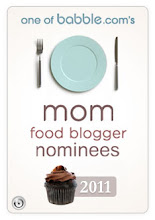With this post comes an apology to my dear friend Dina. You see, a few weeks ago, I got it in my head that I was going to make marshmallows. I've come across a recipe or two, and it sounded easy enough.
Well, I was off to babysit her two boys one night recently, and I thought I'd give a whirl at her place, thinking the kiddos would like it. So, with three little boys running around her kitchen, I proceeded to get a gooey, corn syrup and sugar mess on just about everything, including the kids. Lucky for her I got it cleaned up before she got home. Unlucky for her, I left a pie plate full of a sticky glob of white sugar that couldn't be chiseled out of the pan by a miner.
So, Dina, I'm sorry. Now, to redeem myself, her boys will find some treats on their doorstep soon.
Thanks to my neighbor Olga, I got my hands on a Martha Stewart recipe for marshmallows. It's not that different from the one I tried previously, but the method has a much better explanation of how to handle this tacky (as in sticky, folks) candy. And while I was watching the mixer whir last night, I remembered back to Dina telling me that she did get a bite or two out of the batch I'd left her, and she said it reminded her of S'mores.

How fun would it be to get a treat in winter that tasted like a S'more? Very fun. So, after cutting my marshmallow mass into 1-inch cubes, I dunked them in chocolate and then graham cracker crumbs. I also dunked a few in crushed peppermint.
If this doesn't get me redemption, I'm not sure what will. The S'mores ones are a little bite of summer campfire in the middle of winter, and the peppermint ones are a taste of holiday fun.
You don't need any special tools, just a stand mixer and a pizza cutter. Make the marshmallow the night before (it needs to dry out over night) and then get the kids involved to decorate. You can use cookie cutters to cut out shape, although I found using a pizza cutter yielded the best results.
 Marshmallows
Marshmallows
From Martha Stewart
4 envelopes unflavored gelatin
1 1/2 cups water
3 cups sugar
1 1/4 cups light corn syrup
1/4 teaspoon salt
2 teaspoons vanilla extract
1 1/2 cups confectioners' sugar, plus additional for rolling
Oil an 11 x 17-inch Pyrex baking dish with vegetable oil. Line the dish with lightweight aluminum foil, and lightly coat the foil with more oil.
In the bowl of a standing electric mixer, soften the gelatin with 3/4 cup of the water.
Place the sugar, corn syrup, the remaining 3/4 cup water, and the salt in a heavy-bottomed saucepan. Bring to a boil and cook over high heat until the syrup reaches 234 to 240 degrees, or the soft-ball stage, on a candy thermometer.
With the whisk attachment of the mixer at full speed, beat the hot syrup slowly into the gelatin until mixture is very stiff, about 15 minutes. Beat in the vanilla. Pour the mixture into the foil-line dish and smooth the top with an oiled spatula. Allow the mixture to rest, uncovered, at room temperature 10 to 12 hours.
Using a fine sieve, sprinkle the confectioners' sugar onto a cutting board. Turn the stiffened marshmallow mixture out onto the sugar, and using a small, lightly oiled cookie cutter, cut into shapes. Be sure to dip the cute edges of the marshmallows into confectioners' sugar to prevent sticking.
*My notes: I used a sheet tray lined with parchment paper that had been lightly oil and then sifted with confectioners' sugar. Then, once inverted, I cut away the edges to get a clean shape. Using a pizza cutter, I cut strip and then cubes, yielding about 80 cubes. I tossed the cubes in a bowl with powdered sugar about 10 at a time to coat, so they would not stick to each other. Then, using a double boiler, I melted chocolate chips. Then I dunked one side of each cube into the chocolate and then into fine graham cracker crumbs and peppermint crumbs (separately).
 It is yummy, buttery and delicious. I want to try it soon as muffins, but haven't had the chance yet. And I think some sharp cheddar cheese added to the batter could be heavenly. But making it just as this recipe suggests is plenty good. Dina suggests using a light beer, although thanks to the dark, seasonal beers Seth likes, I've used a couple of different varieties, all with tasty results.
It is yummy, buttery and delicious. I want to try it soon as muffins, but haven't had the chance yet. And I think some sharp cheddar cheese added to the batter could be heavenly. But making it just as this recipe suggests is plenty good. Dina suggests using a light beer, although thanks to the dark, seasonal beers Seth likes, I've used a couple of different varieties, all with tasty results.











